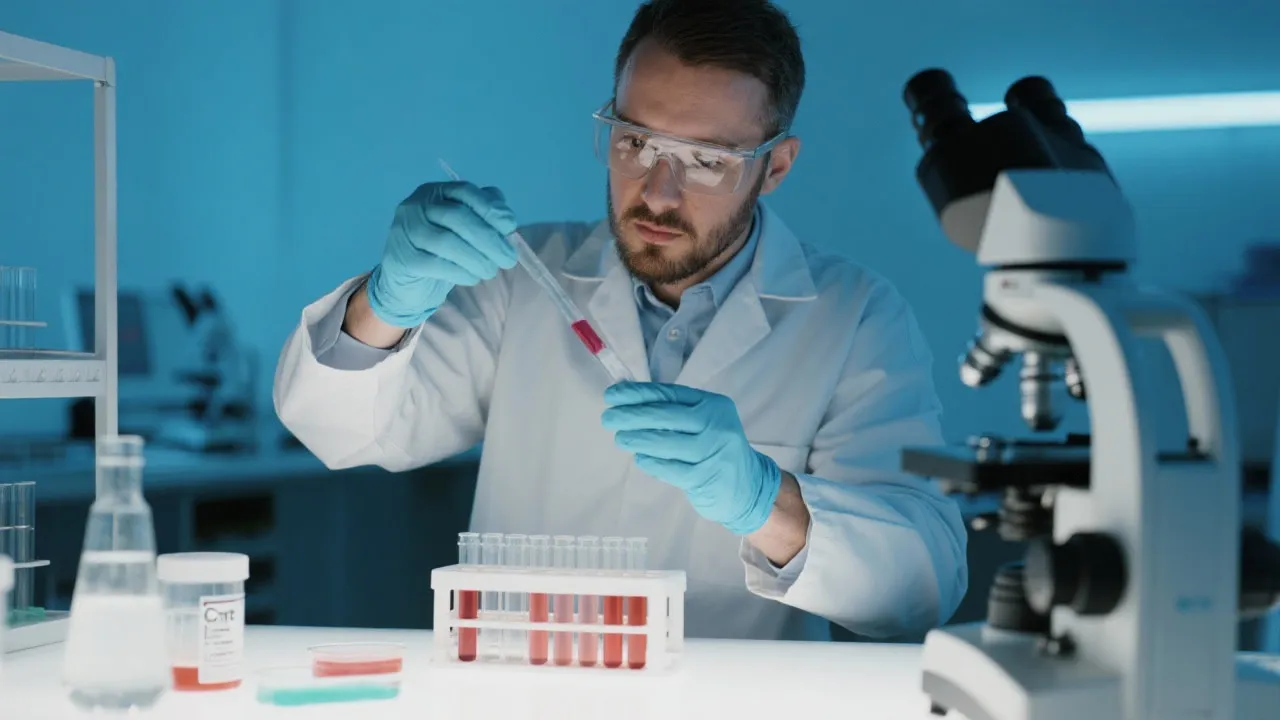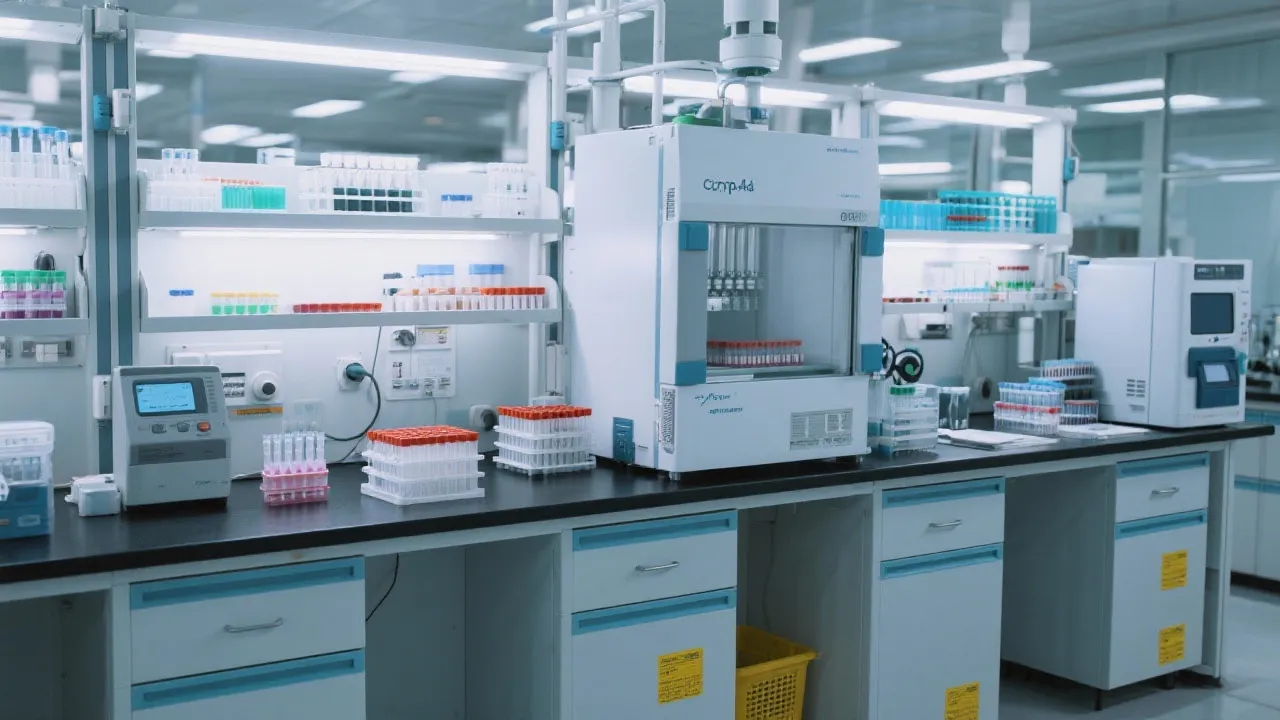Understanding the Cyp1a1 Assay
The Cyp1a1 assay is a critical tool in pharmacology and toxicology, used to quantify enzyme activity associated with drug metabolism and chemical safety evaluation. Understanding its applications and methodologies is essential for researchers. These assays are integral to evaluating potential drug interactions and the toxicological effects of chemical compounds.

Introduction to Cyp1a1 Assay
The Cyp1a1 assay is an essential methodology in both pharmacological and toxicological studies, primarily used for assessing the enzymatic activity involved in the metabolism of various compounds. Cyp1a1, a member of the cytochrome P450 superfamily, plays a crucial role in the oxidative metabolism of drugs and environmental chemicals, turning them into more water-soluble compounds for excretion. Understanding the importance of this assay is vital for researchers aiming to predict drug interactions and evaluate the safety of chemical entities. The significance of Cyp1a1 in metabolic pathways cannot be overstated; its activities are critical for the biotransformation of numerous substrates, including polycyclic aromatic hydrocarbons (PAHs), which are potent environmental pollutants. Consequently, the Cyp1a1 assay is often integrated into broader screening methodologies that seek to evaluate both therapeutic compounds and hazardous substances in terms of their metabolic pathways.
The Role of Cyp1a1 in Drug Metabolism
Cytochrome P450 1A1 is involved in the oxidation of xenobiotics, potentially impacting therapeutic efficacy and safety. Predictive assays for Cyp1a1 help foresee how a drug will behave in the human body, including absorption, distribution, metabolism, and excretion (ADME). This understanding is crucial for identifying adverse drug reactions, optimizing dosing regimens, and developing safe pharmaceutical agents. Furthermore, the activity of Cyp1a1 is not just limited to detoxifying xenobiotics; it can also activate certain pro-drugs into their active forms. For example, the metabolism of compounds like tamoxifen, used in breast cancer therapy, is significantly influenced by Cyp1a1 activity, demonstrating its dual role in drug metabolism. Additionally, genetic variations that influence Cyp1a1 expression levels can lead to inter-individual differences in drug responses, making the understanding of Cyp1a1 an important consideration in personalized medicine.
Methodologies Employed in Cyp1a1 Assays
Cyp1a1 assays typically involve either in vitro or in vivo systems. In vitro assays offer the advantage of controlled environments where enzyme activity can be precisely measured using liver microsomes or recombinant proteins. These assays often use substrate-specific assays to monitor enzyme turnover rates under various conditions, providing insights into potential drug-drug interactions. Various substrate analogs help in observing Cyp1a1 activity, often aided by specific inhibitors to elucidate metabolic pathways more clearly. Moreover, recent advancements in high-throughput screening technologies have allowed for the rapid assessment of large numbers of compounds, accelerating the discovery and optimization phases in drug development. In vivo assays, while more complex and resource-intensive, provide comprehensive insights into the systemic effects of drug metabolism, helping researchers understand how Cyp1a1's activity can be influenced by other physiological factors such as diet and overall health status.
Applications and Implications of Cyp1a1 Assays
The applications of Cyp1a1 assays span several fields, very notably in drug discovery, environmental toxicology, and chemical safety assessments. By evaluating how potential drugs or environmental chemicals are metabolized, researchers can identify risks associated with chemical exposure. This has significant implications for consumer safety regulations and the development of therapeutic interventions. For example, in drug development, the Cyp1a1 assay is commonly used to screen lead compounds for their metabolic stability and pharmacokinetic profiles before deeper evaluations in clinical trials. Researchers utilize these assays to filter out compounds that may have hazardous metabolic byproducts that could compromise human health.
| Application | Explanation |
|---|---|
| Drug Discovery | Used to determine how a new drug is metabolized, aiding in the optimization of its chemical structure for better efficacy and safety. |
| Environmental Toxicology | Assesses the impact of exposure to environmental chemicals, predicting potential toxicities and good health risks. |
| Chemical Safety | Ensures that chemicals used in consumer products do not pose harmful effects due to inappropriate metabolization. |
| Personalized Medicine | Helps tailor medications to individual responses based on genetic polymorphisms affecting Cyp1a1 expression and activity. |
| Risk Assessment | Allows regulatory agencies to evaluate the risk of exposure to industrial chemicals based on their metabolic profiles. |
Challenges and Considerations in Cyp1a1 Assays
Despite their utility, Cyp1a1 assays face challenges related to variability in assay conditions, such as differing enzyme expression levels and genetic polymorphisms among human populations. These factors can influence the interpretation of results and the extrapolation of data from model organisms to humans. Additionally, advancements in co-culture systems and humanized mouse models are being explored to improve the predictive accuracy of these assays. Factors such as the influence of diet, sex, and age on enzyme activity can complicate the analysis, necessitating a comprehensive understanding of these variables during experimental design. Furthermore, the availability of specific inhibitors or substrates for Cyp1a1 might limit the interpretative scope of certain assays. Therefore, standardization of methodologies and the development of more robust predictive models are ongoing areas of research aimed at overcoming these challenges.
Recent Advances in Cyp1a1 Research
Recent studies have highlighted the implications of Cyp1a1 in various health outcomes, particularly with regard to cancer risk and the metabolism of environmental toxins. For instance, Cyp1a1 is often induced by polycyclic aromatic hydrocarbons such as benzo[a]pyrene, a compound found in tobacco smoke and charred meats. The activation of Cyp1a1 leads to the formation of reactive intermediates that can cause DNA damage, thus linking this enzyme to increased cancer risk. Research is also exploring the development of biomarkers based on Cyp1a1 activity to monitor exposure levels to environmental pollutants and the effectiveness of interventions aimed at reducing risk factors associated with cancer.
Emerging Trends and Future Directions
In the realm of drug discovery and toxicity testing, there is a shift towards utilizing omics technologies and modeling platforms that incorporate systems biology approaches. Integration of genomic, transcriptomic, and metabolic data is expected to enhance the predictive capabilities of Cyp1a1 assays. For example, high-throughput sequencing technologies may reveal novel regulatory networks that govern Cyp1a1 expression, leading to better risk assessments for drug interactions and chemical exposures. Additionally, advancements in computational modeling can aid in predicting how various genetic backgrounds could influence Cyp1a1's activity, enhancing personalized medicine approaches. The ultimate goal is to refine these assays not only for routine drug testing but also to understand the nuances of metabolic pathways influencing both therapeutic and adverse outcomes in drug administration and environmental exposure.
Case Studies in Cyp1a1 Assay Implementation
Several case studies exemplify the utility of Cyp1a1 assays in real-world applications. For example, the pharmaceutical giant Pfizer implement numerous Cyp1a1 assays during their drug development pipeline for a novel anti-cancer agent. The results indicated that the agent was a substrate for Cyp1a1, leading to the identification of potential drug-drug interactions with commonly prescribed medications. This insight was pivotal in refining dosing recommendations prior to clinical trials.
Another compelling case study involves the assessment of dietary polycyclic aromatic hydrocarbons and their activation via Cyp1a1. Research demonstrated that individuals with certain genetic variants of the Cyp1a1 gene had an increased risk of developing lung cancer after exposure to these compounds. This finding prompted public health initiatives aimed at educating communities about dietary risks associated with grilled or smoked foods.
Overall, such case studies highlight not only the diverse applications of the Cyp1a1 assay but also its impact on making informed decisions in both regulatory affairs and clinical settings.
Integrating Cyp1a1 Assays into Regulatory Frameworks
As the importance of metabolic studies continues to rise, regulatory agencies such as the U.S. Environmental Protection Agency (EPA) and the European Chemicals Agency (ECHA) have begun integrating Cyp1a1 assays into their criteria for evaluating the safety of new chemical entities. These frameworks are critical for screening potentially toxic compounds prior to their market introduction. In jurisdictions such as the European Union, initiatives like REACH (Registration, Evaluation, Authorisation, and Restriction of Chemicals) foster a rigorous analysis of chemical safety, where assessments include Cyp1a1 metabolism data to gauge human health risks.
Moreover, the International Council for Harmonisation (ICH) has proposed guidelines advocating the incorporation of Cyp1a1 assays in toxicological investigations. By establishing unified standards, harmonization efforts aim to enhance the assessment of drug metabolism across regions, ensuring that new drugs meet safety standards before approval.
FAQs
- Why is the Cyp1a1 assay important in pharmacology?
It aids in predicting how drugs are metabolized, helping to identify potential drug interactions and side effects.
- What challenges are associated with Cyp1a1 assays?
Challenges include variability in enzyme expression and genetic diversity, which may affect how results are interpreted.
- What advancements are being made to improve these assays?
Innovations include developing more sophisticated in vitro systems and humanized models to better mimic human metabolic conditions.
- How does Cyp1a1 influence cancer risk?
Cyp1a1 activates certain carcinogens found in the environment, which can result in DNA damage leading to cancer.
- What is the future outlook for Cyp1a1 assays?
The integration of omics technologies and computational modeling is expected to enhance predictive accuracy and applicability in various fields.
Conclusion
The Cyp1a1 assay is indispensable in modern pharmacology and toxicology, offering insights into the metabolism of substances crucial for drug development and chemical safety assessment. As technology advances, the precision and reliability of these assays continue to improve, providing more accurate data to safeguard human health and enhance drug efficacy. Understanding and navigating the complexities of Cyp1a1 assays is paramount for researchers dedicated to advancing medicine and safety in the realm of chemical exposure. The potential for future advancements through innovative technologies suggests a promising trajectory for the Cyp1a1 assay, which may ultimately lead to safer therapeutic interventions and a better understanding of the complex interactions between xenobiotics and human health.






